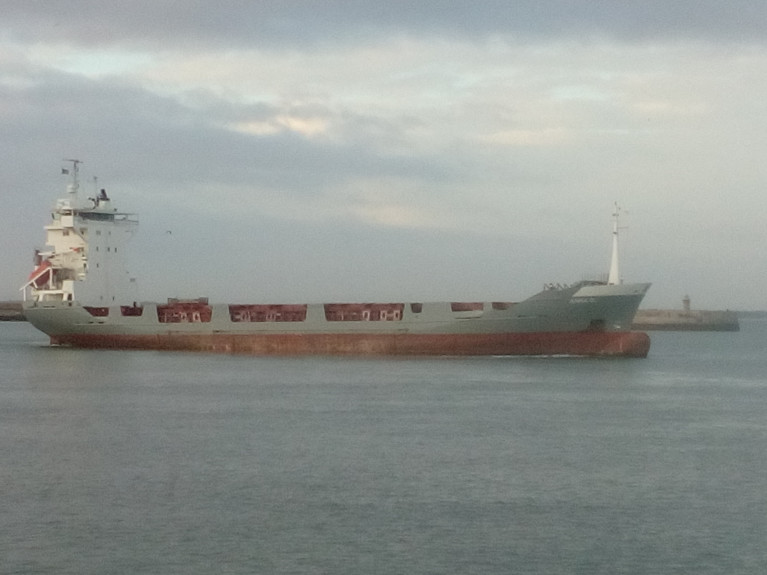A containership which was under tow from Carlingford Lough to Dun Laoghaire Harbour in mid-November finally departed yesterday following engine repairs that lasted much longer then expected, writes Jehan Ashmore.
Anna G with a capacity for 515TEU containers departed on the Monday Bank Holiday following New Year's Day that fell on Saturday. As such the long weekend was busy as when the ship eased off the Carlisle Pier the departure was observed by many walkers thronging the harbour's East Pier.
Originally, Anna G was to remain in the port to effect engine repairs for an estimated four weeks according to Dun Laoghaire-Rathdown County Council as previously reported, however the vessel operated by German shipowner Reederei-Gerdes would stay in port beyond this timeframe.
It was last month when various engine parts had to be shipped to Germany to be machined and though they were returned to the ship, work that was to be concluded before Christmas did not arise.
This forced Anna G to remain in the harbour and into the New Year, coupled with technicians away on leave for the festive period. This further delayed the works until their return last week to complete repairs.
Previously on Sunday, Anna G departed (albeit within the harbour) from St. Michael's Pier to vacate berth No. 4. This was to due operational reasons, though on that same day saw the arrival to the same berth of Irish Lights aids to navigation tender ILV Granuaile from Belfast Harbour.
As for the 5,210tdw containership which shifted to the adjacent Carlisle Pier at berth No. 2 which is on the far side of the pier opposite of the East Pier.
On the next day a Dublin Port pilot cutter DPC Tolka arrived mid-afternoon to embark a pilot on board the Limassol registered Anna G.
This led to the ship cautiously easing off the Carlisle Pier while using a bow thruster and also going astern before swinging the bow off the East Pier's bandstand from where bystanders saw the 101m ship get underway.
Having swung around sufficiently, Anna G was facing the harbour mouth and with that a single blast of the ship's horn also marked the long awaited departure of the ship which had been in port for more than seven weeks.
Anna G then set off into Dublin Bay and soon afterwards the DPC Tolka returned to disembark the pilot while off Scotsman's Bay. With that procedure concluded the ship continued on a southerly course with the passing off The Muglins beacon off Dalkey.
The containership's next port of call is the Port of Felixstowe, Britain's biggest 'box'-boat port.
As of 12 noon today, Anna G had already passed Land's End, Cornwall and was approaching the eastbound shipping lane of the English Channel.
Tomorrow night the vessel is due to arrive at the North Sea port.

























